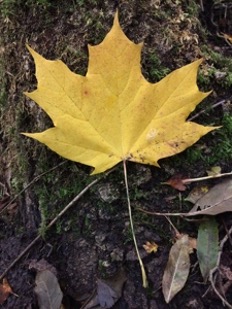-

Recycling Autumn leaves
If you have the space, why not compost your leaves into leaf mould to use as a soil conditioner, or over time, a seed or potting compost (when mixed with grit and compost). The best leaves for this are Oak, Beech and Hornbeam as they break down without the need for assistance. Thicker leaves such as sweet and horse chestnut need to be shredded first.
If you have pine needles, compost these separately to create a slightly acidic leaf mould. This is great to condition the soil around ericaceous plants such as Rhododendron, Pieris japonica, Camelia, and Blueberries.Tough, evergreen leaves need to be shredded first and then added to the general garden compost pile.
To create a leaf mould compost construct four posts and surround with chicken wire, ideally at least 1m square in an area sheltered from the wind. Alternatively, stuff the leaves into a large bag, dampen dry leaves, tie and pierce the bag with several holes. The micro organisms that break the leaves down require both moisture and air to survive and do their thing!
How long will it take? most leaves take about 2 years. But, once you start this as a yearly task, it will just become a part of the garden cycle. And best of all, it is good for the environment, your garden and your pocket! If you want to use it before it is well-rotted, then it can be used as a mulch on the beds which is particularly beneficial over Autumn and Winter to protect the topsoil’s surface.Things to be aware of … Busy roads – the leaves collected from busy road sides may be affected by pollution. Depending on the collection site, storage and breakdown of the leaf mould, it could contain viable weed seeds.

